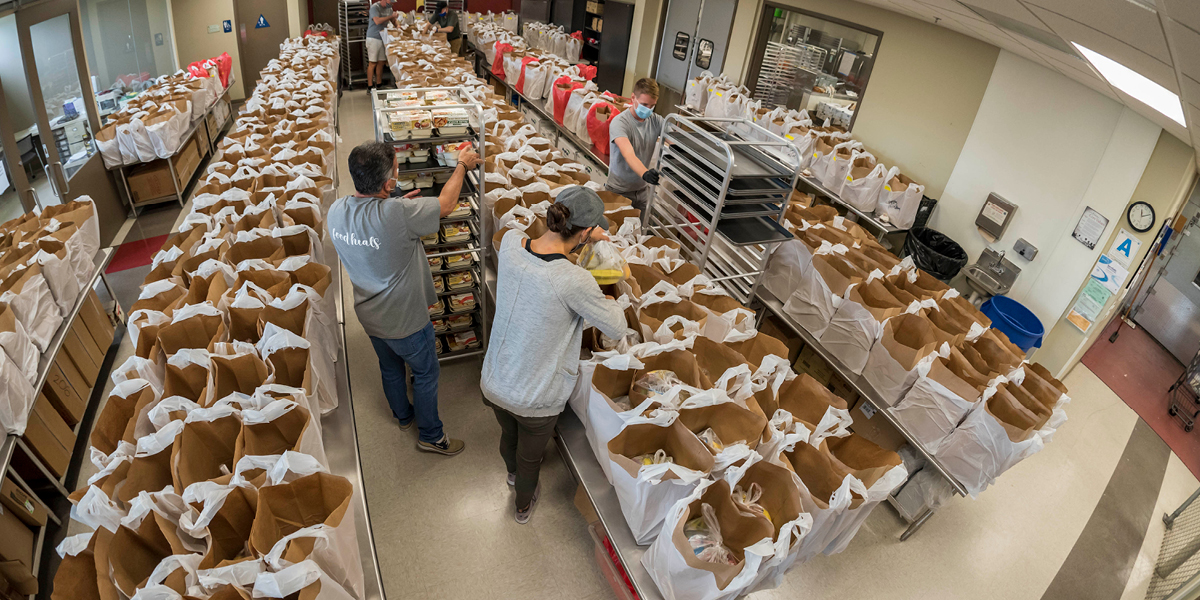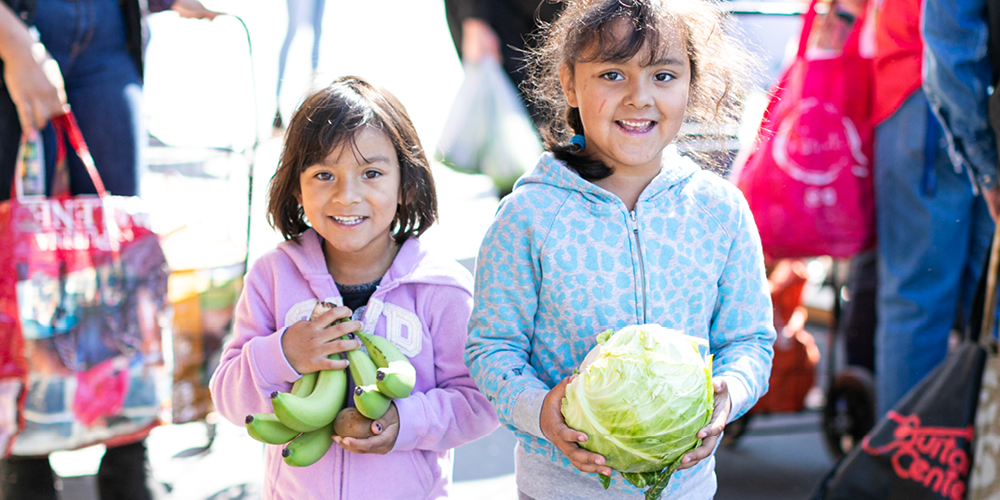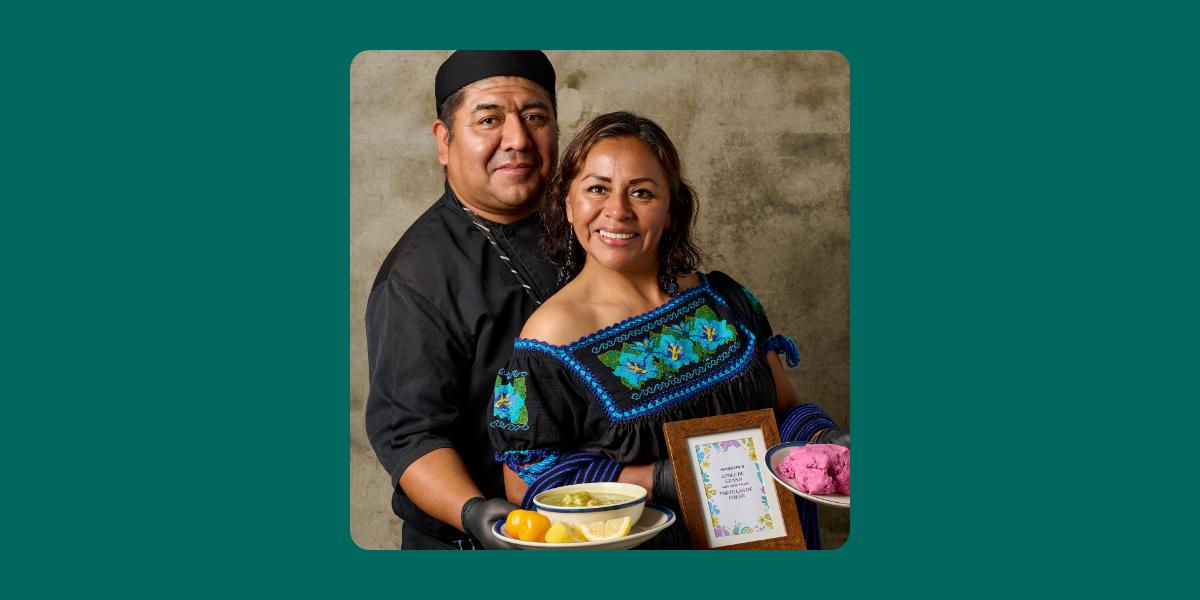Hunger is considered an invisible issue – you can’t tell from looking at someone that they’re unsure where their next meal will come from. It’s easy to forget that good nutrition and food options are not a part of everyone’s life in our region.
Unfortunately, new data shows that there’s still lots of work to be done, especially among seniors and Black and Latinx communities in San Diego.
Defining Food and Nutrition Insecurity
Food insecurity is “a lack of consistent access to enough food for every person in a household to live an active, healthy life.” Sometimes this is only a temporary situation, but it can also be long term. Food insecurity is often tied to other issues like a lack of affordable housing, low-wage jobs, long-term unemployment, high medical costs and acute health problems. These social determinants of health together can all contribute to a wide range of health outcomes and risks.
Nutrition insecurity specifically is defined as a child, adult or senior who can’t rely on three nutritious meals a day. In San Diego, statistics show that escaping nutrition insecurity requires an annual income of at least:
A Closer Look at the Data
Based on the San Diego annual income criteria, San Diego Hunger Coalition determined in their recent State of Hunger Report that nearly 1 in 4 (755,000 people) are nutrition insecure. Breaking the data down further, we see that food and nutrition insecurity affects a cross section of San Diego’s population:
- Nearly 1 in 3 children (198,000 children)
- Nearly 1 in 4 older adults (111,000 seniors)
- More than 1 in 3 people with disabilities (115,000 people)
Equity Issues
When looking closer at nutrition insecurity across diverse San Diego communities, there is clearly an equity issue when it comes to the disproportionate impact of hunger in specific communities.
A quick glance at the graph shows Latinx/Hispanic and African American/Black communities in particular struggle with providing three nutritious meals a day for their families, followed by Native American, Asian and other groups. White communities have the lowest percentage of food insecurity in the region.
Reasons for Nutrition Insecurity
The current state of the economy is the largest factor contributing to nutrition insecurity in San Diego. From grocery to fuel prices to a lack of high-paying jobs, families are struggling to make ends meet. Here are some of the contributing economic factors in San Diego County, according to San Diego Hunger Coalition:
- Higher food prices – Average cost of a meal has increased 18% since 2019.
- Housing – The price of a home in San Diego rose 29% from April of 2021 to April 2022. Similarly, monthly rents in San Diego have increased 24%.
- Fuel and Energy – The price of gasoline increased 43% in San Diego from May 2021 to May 2022. Electricity and natural gas prices rose 18% during the same period.
- Household debt – Increased by $1.7 trillion in the U.S. since the end of 2019. 30% of households reported that they relied on credit card debt to stay afloat during the pandemic.
- Low-wage jobs – 30% of full-time workers in San Diego County are still bringing home less than $35,000 per year.
Support Services Available
In San Diego, there are a number of support services available to families in need. While these services don’t completely close the “meal gap” in the region, they are making a difference. Provided or supported by San Diego Hunger Coalition, important services include:
- Food banks – Local food pantries and distributions provide important dietary staples and fresh food options that are available to all San Diego residents, with many locations offering drive-thru or home delivery options.
- Cal-Fresh– Cal-Fresh food assistance, also known as Supplemental Nutrition Assistance Program (SNAP) and formerly known as food stamps, is a program for low-income families or individuals that meet certain income guidelines; the amount of benefit issued depends on household size and income.
- Free School Meals – All pre-K-12 students attending California public schools can receive free meal assistance.
- Supplemental Nutrition Program – The Women, Infants, and Children (WIC) supplemental nutrition program offers women who are pregnant and/or have a child under 5 with healthy food benefits, nutrition education, breastfeeding support, and referrals to community resources.
- Senior Meal Services – Available to home-bound adults age 60 and older in San Diego, San Diego Hunger Coalition and others provide home-delivered meals.
Still More to be Done
Despite all the services available in San Diego County, hunger and nutritional needs still affect thousands of families. Looking at data from June of 2022 in the recently released San Diego Hunger Coalition State of Hunger report, there is still a “meal gap” for food assistance.
In June 2022, food assistance provided over 29 million meals across all programs, meeting 75% of the estimated need for food assistance. However, it was determined that another 9.9 million meals would have been needed in the month of June for San Diego County’s population to be nutrition secure.
If you or someone you know needs food assistance, contact SD Hunger Coalition or 211SanDiego.org.
Learn more about San Diego Foundation efforts around food and nutrition insecurity.





